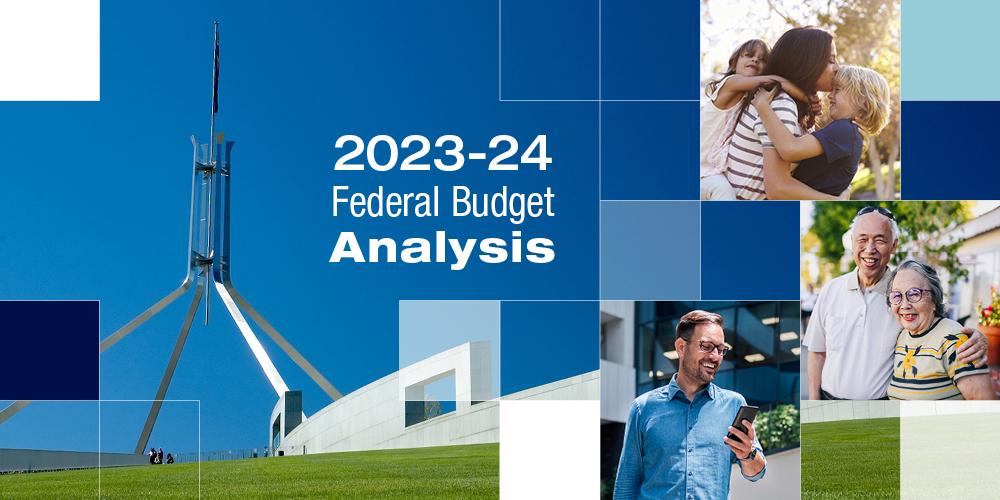While the price of most goods and services continues to rise, the good news is the rate of increase is continuing to slow and the markets are beginning to breathe a sigh of relief. The Consumer Price Index rose 0.8% in the June quarter and 6% annually in the lowest increase since September 2021. And in some areas prices fell including domestic holiday travel, accommodation and petrol. In the US, sharemarkets ended July higher after inflation eased to its lowest level in two years.
Nonetheless, cost-of-living pressures continued to affect our spending with a sharp fall in retail turnover of 0.8% in June. Those figures, along with the better-than-expected US data bringing concerns of tighter monetary policy, kept the ASX200 in check as some banks, commodities and miners suffered. The Australian dollar was also affected, hitting its weakest levels in more than two weeks. Unemployment remains at 3.5% with the number of people employed increasing by about 33,000 and the number of jobless decreasing by 11,000.
Meanwhile tightening global oil supplies and high hopes for the outlooks of Chinese demand have seen a steady increase in Brent crude futures to around US$84 a barrel. But iron ore continues its downward trend, falling 2.6% since the beginning of 2023.

How to boost your super with a lump sum
If you’re lucky enough to have received a windfall, perhaps an inheritance or a retrenchment payout, your first decision will be what to do with it.
Assuming you have decided against a shopping splurge, finding the best place to invest a lump sum is all about the effect on your tax bill and how soon you will need access to the funds.
For those interested in investing their lump sum for a longer term, superannuation is one approach because of its tax benefits.
But be aware that, while super can be a tax-effective investment, there are limits on how much you can pay into your super without having to pay extra tax. These are known as contribution caps.
Different types of contributions
There are two types of super contributions you can make – concessional and non-concessional – and contribution caps apply to both.
Concessional contributions are paid into super with pre-tax money, such as the compulsory contributions made by your employer. They are taxed at a rate of 15 per cent.
Non-concessional or after-tax contributions are paid into super with income that has already been taxed. These contributions are not taxed.
So, the tax you pay depends on whether:
-
the contribution was made before or after you paid tax on it
-
you exceed the contribution caps
-
you are a high income earner (If your income and concessional contributions total more than $250,000 in a financial year, you may have to pay an extra 15 per cent tax on some or all of your super contributions.)
Investing after-tax income
There are many different types of after-tax contributions that can be made to your super including contributions your spouse may make to your fund, contributions from your after-tax income, an inheritance, a redundancy payout or the proceeds of a property sale.
Based on current rules, the annual limit for non-concessional or after-tax contributions is $110,000. You can also bring-forward two financial years’ worth of non-concessional contributions and contribute $330,000 at once but then you can’t make any further non-concessional contributions for two financial years. Note that are certain limitation on these types of contributions.
It is also useful to note that, under certain conditions, there are some types of contributions that do not count towards your cap. These include: personal injury payments, downsizer contributions from the proceeds of selling your home and the re-contribution of COVID-19 early release super amounts.
The Downsizer scheme allows the contribution of up to $300,000 from the proceeds of the sale (or part sale) from your home. You will need to be above age 55 but there is no upper age limit, the home must be in Australia, have been owned by you or your spouse for at least 10 years, the disposal must be exempt or partially exempt from capital gains tax and you have not previously used a downsizer contribution.
Giving your super a boost
A review of your super balance and some quick calculations about your projected retirement income might inspire you to give your super a boost but not everyone has access to a lump sum to invest.
A strategy that uses smaller amounts could include any amount from your take-home pay. These contributions will count towards your non-concessional or after-tax cap.
Alternatively, you add to your super from your pre-tax income using, for example, salary sacrifice. These types of concessional or pre-tax contributions attract a different contribution cap: $27,500 per year, which includes all contributions made by your employer.
If your super fund balance is less than $500,000, your limit may be higher if you did not use the full amount of your cap in earlier years. You can check your cap at ATO online services in your myGov account.
The rules for super contributions can be complex so give us a call to discuss how best to maximise your benefits while avoiding any mistakes.

How iron ore plays a big part in our economy
Iron ore has been the backbone of the Australian economy and many investment portfolios for much of the 21st century.
In 1921, iron ore accounted for 68 per cent of Australia’s export revenue. This was the year that iron ore prices peaked at almost $US230 a tonne.i
However, its growth as an export icon really took off with the first shipment of iron ore from the Pilbara in Western Australia in 1966.
Today there are three major companies that mine iron ore in Australia – BHP, Rio Tinto and Fortescue Minerals. Considered blue chip stocks, they are often favourites with investors and their share price performance is linked to iron ore prices.
Iron ore’s importance worldwide stems from its use in steel, a key material used in infrastructure, housing and manufacturing equipment globally.ii
China’s role
The main recipient of Australia’s iron ore is China. In 2022 China bought 1.1 million tonnes of iron ore, 65 per cent of which came from Australia.iii
While demand is still high in China, Covid put a dampener on its economic growth. Its strict measures did not start to roll back until December 2022 and investors began to worry.
While economic activity is slowly resuming, it has reduced significantly from its heady days. As a result, demand for iron ore has also fallen.
This has seen the price of iron ore drop to around the $US100 a tonne mark from its $US230 million peak in 2021.
Although China’s economy is not performing as energetically as it did a decade ago, recent moves to boost domestic demand are causing some optimism among market watchers, although there are still bears around who are more circumspect.
Global demand
The rest of the world is wrestling with recession and that too has put a dampener on the market.
Added to this slowdown in demand are moves to increase supply by Australia’s major producers and Brazil’s Vale Mining.iv
Luckily, iron ore is relatively cheap to produce in Australia at around $US30 a tonne, which shelters the miners somewhat from price fluctuations. While Rio Tinto and BHP can remain profitable with prices dropping as low as $US60, lower prices will have a flow on effect, impacting superannuation balances, investor returns and the broader economy.v
Impact on the economy
Unfortunately, lower profits mean significantly lower tax revenue and that in turn will affect the Australian economy.
While profits are still boosting the government’s coffers, the outlook is less bright.
Tax revenue from iron ore has made a significant contribution to our economy and has been a key reason for the recent federal budget surplus after 15 years of deficits.
Nevertheless, the domestic economy is still expected to slow as high inflation and global challenges make their mark.
Budget papers estimate that a $US10 per tonne increase in the Commonwealth’s assumed price for iron ore exports is expected to result in an increase in tax receipts of around $500 million in both 2023-24 and 2024-25.vi
But the federal government is still cautious about the economic outlook for Australia and are forecasting a return to a budget deficit and the possibility of a recession as the move to higher interest rates puts brakes on the economy.vii
Aside from economic performance, any reduction in revenue for the mining companies will also translate into lower dividends and lower price growth for investors.
But despite some bearish sentiment in the market including the growing number of institutional and individual investors steering clear of mining stocks over ethical and environmental concerns, there is no denying that iron ore is still a big money spinner.
If you would like to discuss options for investment in the current economic climate, then give us a call.
i https://minerals.org.au/resources/record-high-for-resources-export-revenue/
ii https://www.mining-technology.com/features/timeline-australian-iron-ore-at-a100bn/
iii https://edition.cnn.com/2023/05/05/economy/australia-china-exports-record-intl-hnk/
iv https://www.mining.com/iron-ore-price-expected-to-ease-over-next-5-years-on-slower-demand-growth-and-more-supply/.
v https://www.abc.net.au/news/2023-05-30/australian-iron-ore-boom-ending-after-china-rift/102408002
vi https://www.watoday.com.au/politics/western-australia/how-wa-s-resource-riches-helped-deliver-the-first-budget-surplus-in-15-years-20230509-p5d725.html
vii https://www.reuters.com/markets/australia-eyes-bigger-budget-surplus-warns-economy-still-slowing-2023-06-28/

The automotive industry sparking up with electric vehicles
With electric vehicles fast overtaking petrol driven cars in sales in Australia, what are the considerations for the industry, the environment, and consumers?
The popularity of electric vehicles has been a long time coming. While electric vehicles may just be giving petrol driven cars a run for their money now, the technology has been around for centuries. The first electric cars appeared on roads as early as the 19th century, however internal combustion engines, fuelled by petrol, took off shortly after this in the 1920s and quickly became the power source of choice for cars.i
Growing in popularity
While at present internal combustion engines still dominate passenger vehicle sales in most categories, that’s changing – mainly in the medium car space. In fact, three out of five new medium-sized cars sold in Australia in the first quarter of the year were powered by electric batteries, according to new figures from the Australian Automobile Association.ii
And in general, the popularity of electric vehicles is surging, with year-to-date sales totalling 32,050 – increasing in 12 months by a staggering 778.3 per cent.iii
Market share is likely to continue to grow. The main barrier to entry has to date been primarily cost but with new more cost-effective models flooding the market, electric vehicles are becoming even more accessible. One other concern for consumers was that electric vehicles were perceived as being less powerful than gas guzzlers, but new models are providing greater grunt. The latest edition to the Queensland police force’s fleet is electric and is being hailed as their most powerful car yet.iv
Easy on the hip pocket
So, what are the considerations if you are thinking of making your next car an electric vehicle? Electric vehicles are significantly cheaper to run, offering fuel savings of up to 70 per cent and maintenance savings of around 40 per cent compared to a standard petrol or diesel vehicle. For an average car travelling 13,700 km per year, this could amount to an annual fuel saving of $1000, or $1200 if the EV is able to charge overnight on an off-peak tariff.
Electric vehicles are also much cheaper to maintain, with less moving parts than a petrol or diesel car. There is relatively little servicing and no expensive exhaust systems, starter motors, fuel injection systems, radiators and many other parts that are not needed in an electric vehicle.
The benefit to the environment, health and the economy
The benefits of electric vehicles are broad-ranging and have the potential to impact our personal health, the health of our environment and the economy. Breathing in the contaminants from motor vehicles is implicated in a range of health problems and transport is a significant contributor to Australia’s greenhouse gas emissions. And the potential benefits for our economy in terms of reduced greenhouse gas emissions, less air and water pollution, and less vehicle noise are estimated to equate to almost $500 billion over the next 30 years.v
What are the considerations?
While there are a lot of benefits to electric vehicles, both at a personal level and at a more macro level, there are also some considerations you need to think about if buying an electric vehicle is on your radar.
One of the biggest issues with electric vehicles is the fact that they need charging quite regularly, generally having a charging range of around 80-100kms. This limitation may mean an electric car is great as a runabout but might not be so suitable if you are regularly travelling longer distances.
Then there are the practicalities of charging your vehicle. New electric vehicles come with a dedicated charger which is usually mounted on the garage wall. You also need to make sure you have access to charging infrastructure while you are out and about so it’s a good idea to check what is available close to you and be aware of likely charging times.
There are a few factors that you need to consider, but electric cars are certainly here to stay and becoming ever more popular so it’s worth thinking about going electric for your next vehicle purchase.
i https://discover.agl.com.au/energy/why-buy-an-electric-car/
ii https://www.smh.com.au/politics/federal/first-past-the-post-evs-race-to-front-in-sales-of-medium-sized-cars-20230420-p5d1yj.html
iii https://www.whichcar.com.au/news/vfacts-may-2023-best-selling-electric-cars-australia
iv https://thewest.com.au/news/transport/most-powerful-queensland-police-car-will-be-electric-c-11045915
v https://www.acf.org.au/electric-vehicles-are-our-zero-emissions-future


















